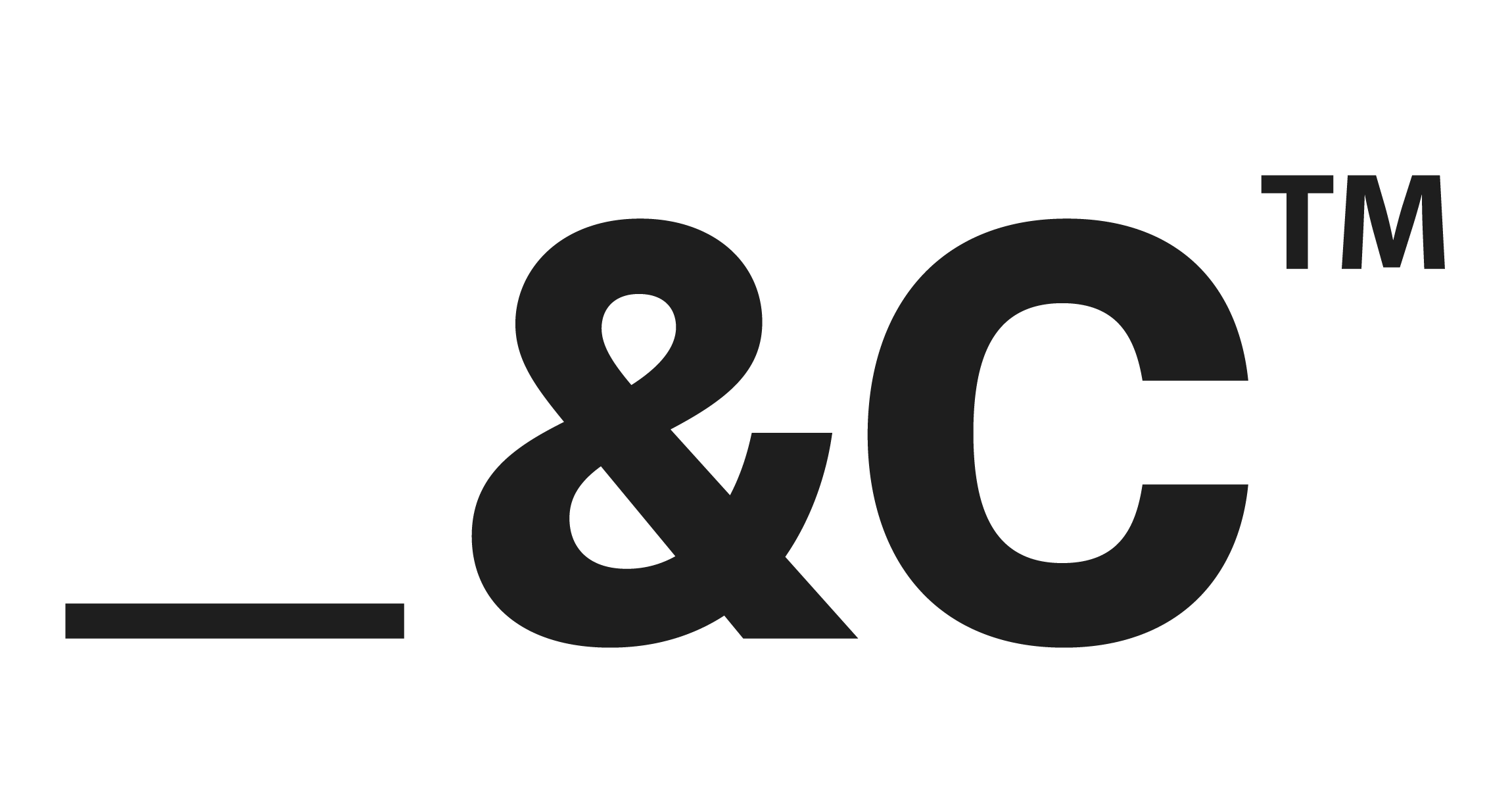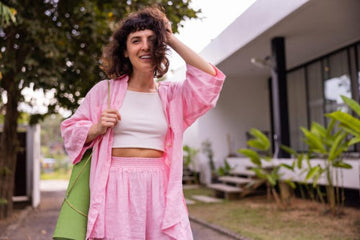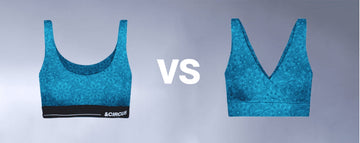Quick Listen:
In the bustling streets of Mumbai, where fashion trends shift as quickly as the monsoon rains, a quiet revolution is unfolding in the world of innerwear. Urban Indians, from young professionals to eco-conscious millennials, are rethinking their choices not just for style or comfort, but for the planet. Sustainable innerwear, crafted from organic cotton, bamboo, and other eco-friendly materials, is no longer a niche trend but a growing movement reshaping wardrobes and mindsets across India's cities.
Uncomfortable underwear shouldn't steal your confidence. At Andcircus, we craft ultra-soft, sustainable Lenzing Modal Micro® innerwear for every body, XS to 5XL. From briefs to bras, our custom packs fit you perfectly. Shop risk-free with our 100% satisfaction guarantee and embrace comfort that includes everyone. #LoveEveryBody. Shop Now!
The Rise of Sustainable Innerwear: A New Trend in Urban Indian Lifestyles
As eco-consciousness takes root in India's urban centers, sustainable innerwear is gaining momentum. The Indian innerwear market, valued at USD 10.24 billion in 2024, is projected to reach USD 19.25 billion by 2033, with a growth rate of 6.70% from 2025 to 2033. This surge isn't just about fashion or function it's about a cultural shift toward sustainability, driven by rising disposable incomes, urbanization, and a demand for premium, eco-friendly products. But what's fueling this change, and how are brands and consumers navigating this new terrain?
The answer lies in a perfect storm of consumer awareness and industry innovation. Young urbanites, scrolling through Instagram or shopping on platforms like Myntra and Zivame, are increasingly drawn to brands that align with their values. They're not just buying underwear; they're investing in a lifestyle that prioritizes the environment and inclusivity. This shift is particularly evident in cities like Delhi, Bangalore, and Mumbai, where the middle class is expanding, and e-commerce is making sustainable options more accessible than ever.
A Greener Wardrobe: The Materials Making the Difference
Sustainable innerwear is redefining what it means to dress responsibly. Gone are the days when synthetic fabrics dominated the market. Today, brands are turning to organic cotton, bamboo, and Tencel materials that are biodegradable, require less water, and leave a lighter footprint on the planet. These fabrics aren't just eco-friendly; they're soft, breathable, and designed for the modern consumer who values comfort as much as conscience.
Take AndCircus, a homegrown Indian brand that's carving out a space in this growing market. With a focus on eco-friendly materials and inclusive sizing, AndCircus is resonating with urban consumers who want underwear that feels good and does good. Their designs, which prioritize sustainability without sacrificing style, reflect a broader trend in the Indian lingerie market, valued at USD 7.12 billion in 2023 and expected to grow to USD 15.5 billion by 2035 at a CAGR of 6.258%. This growth is fueled by a rising acceptance of diverse body types and a demand for inclusivity, with brands expanding their offerings to cater to a wider range of sizes and preferences.
Beyond AndCircus, other brands are stepping up. Some are experimenting with recycled fabrics, while others are adopting zero-waste production methods or biodegradable packaging. These efforts are often supported by partnerships with local NGOs or sustainability organizations, amplifying their impact. In Bangalore, for instance, startups are collaborating with artisans to create handwoven, eco-friendly fabrics, blending tradition with innovation.
The Challenges of Going Green
But the path to sustainability isn't without hurdles. According to a study on India's textile industry, small and medium enterprises face significant challenges in adopting circular economy practices. The lack of a clear framework to measure and implement sustainability, coupled with logistical issues in sourcing eco-friendly materials, makes scaling difficult. For many brands, maintaining transparency across the supply chain ensuring every step, from cotton fields to factory floors, meets ethical standards is a logistical nightmare.
Price sensitivity is another barrier. Sustainable innerwear often comes with a higher price tag, which can feel like a luxury in a market where affordability is king. Urban consumers, while increasingly eco-conscious, still weigh cost against conscience. Educating them about the long-term benefits of sustainable products lower environmental impact, durability, and ethical production remains a challenge. Many still don't realize that conventional innerwear, often made from petroleum-based synthetics, contributes to pollution and waste. Bridging this awareness gap is critical for brands looking to capture the mass market.
Opportunities in a Growing Market
Despite these challenges, the opportunities are immense. India's rapid urbanization and growing middle class are creating a fertile ground for sustainable fashion. With the innerwear market projected to nearly double by 2033, brands like AndCircus have a chance to tap into a consumer base that's young, affluent, and increasingly vocal about sustainability. E-commerce platforms have been a game-changer, offering privacy, convenience, and access to a wide range of brands. The rise of online shopping, coupled with growing awareness of body positivity, is driving demand for inclusive, eco-friendly designs.
For brands, sustainability isn't just a moral choice it's a competitive edge. Companies that prioritize eco-friendly practices are building trust and loyalty among consumers who see their purchases as a reflection of their values. AndCircus, for example, has leveraged its sustainability credentials to stand out in a crowded market, fostering a sense of community among its customers. This approach isn't just good for the planet; it's good for business, attracting investors and partners eager to capitalize on the eco-conscious wave.
A Memorable The Future of Sustainable Innerwear
As India's urban centers pulse with energy and ambition, the rise of sustainable innerwear reflects a deeper shift in how people live and shop. It's a movement driven by a generation that refuses to choose between style, comfort, and responsibility. In the next five to ten years, experts predict even greater innovation think biodegradable fabrics that decompose naturally or production processes that cut water usage by half. For brands, the challenge will be to balance affordability with ethics, ensuring sustainable innerwear isn't just a trend but a staple in every wardrobe.
For consumers, the call to action is simple: the next time you shop for underwear, consider the story behind the seams. Choose brands that prioritize the planet, support ethical practices, and celebrate inclusivity. And for businesses, the message is clear embrace transparency, educate your audience, and lean into sustainability as a core value. In a country as dynamic as India, where tradition meets innovation, the future of fashion is green, inclusive, and ready to make a statement, one stitch at a time.
Frequently Asked Questions
What is sustainable innerwear and why is it becoming popular in urban India?
Sustainable innerwear is made from eco-friendly materials like organic cotton, bamboo, and Tencel that are biodegradable and require less water to produce. It's gaining popularity among urban Indians, especially millennials and young professionals, who are increasingly eco-conscious and want their clothing choices to align with their environmental values. This trend is particularly strong in cities like Mumbai, Delhi, and Bangalore where the expanding middle class has more disposable income to invest in premium, sustainable products.
How much is the Indian innerwear market worth and what's driving its growth?
The Indian innerwear market was valued at USD 10.24 billion in 2024 and is projected to reach USD 19.25 billion by 2033, with a growth rate of 6.70%. This growth is driven by rising disposable incomes, urbanization, increased demand for premium eco-friendly products, and the rise of e-commerce platforms like Myntra and Zivame. The market is also benefiting from growing body positivity awareness and demand for inclusive sizing options.
What are the main challenges facing sustainable innerwear brands in India?
The primary challenges include higher production costs that result in premium pricing, which can be a barrier in India's price-sensitive market. Brands also face difficulties in maintaining supply chain transparency and sourcing eco-friendly materials consistently. Additionally, there's an ongoing need to educate consumers about the long-term benefits of sustainable products, as many are still unaware that conventional synthetic innerwear contributes to environmental pollution and waste.
Disclaimer: The above helpful resources content contains personal opinions and experiences. The information provided is for general knowledge and does not constitute professional advice.
You may also be interested in: Why Moisture-Wicking Underwear Packs Are Best for Warm Climates
Uncomfortable underwear shouldn't steal your confidence. At Andcircus, we craft ultra-soft, sustainable Lenzing Micro Modal innerwear for every body, XS to 5XL. From briefs to bras, our custom packs fit you perfectly. Shop risk-free with our 100% satisfaction guarantee and embrace comfort that includes everyone. #LoveEveryBody. Shop Now!







































